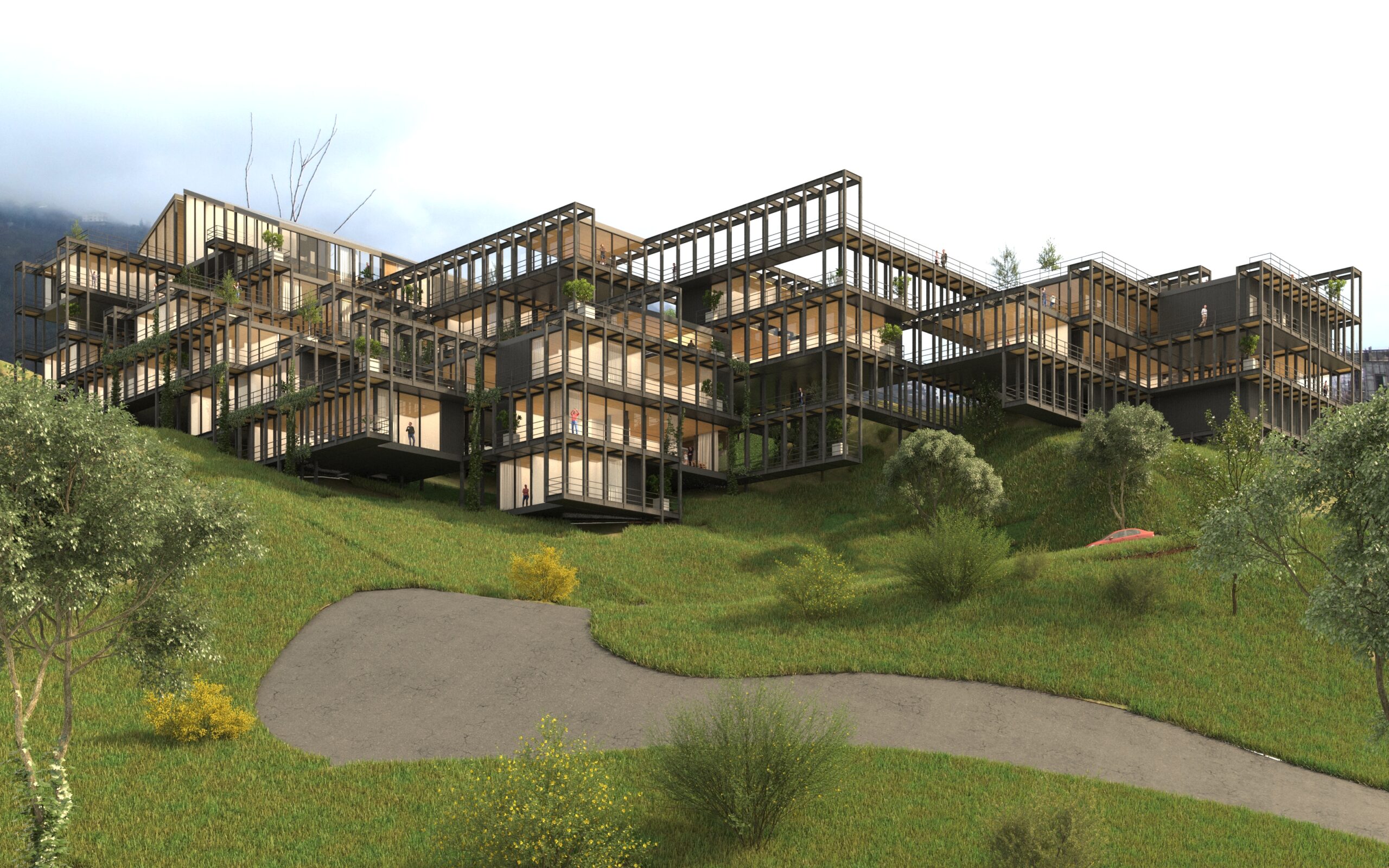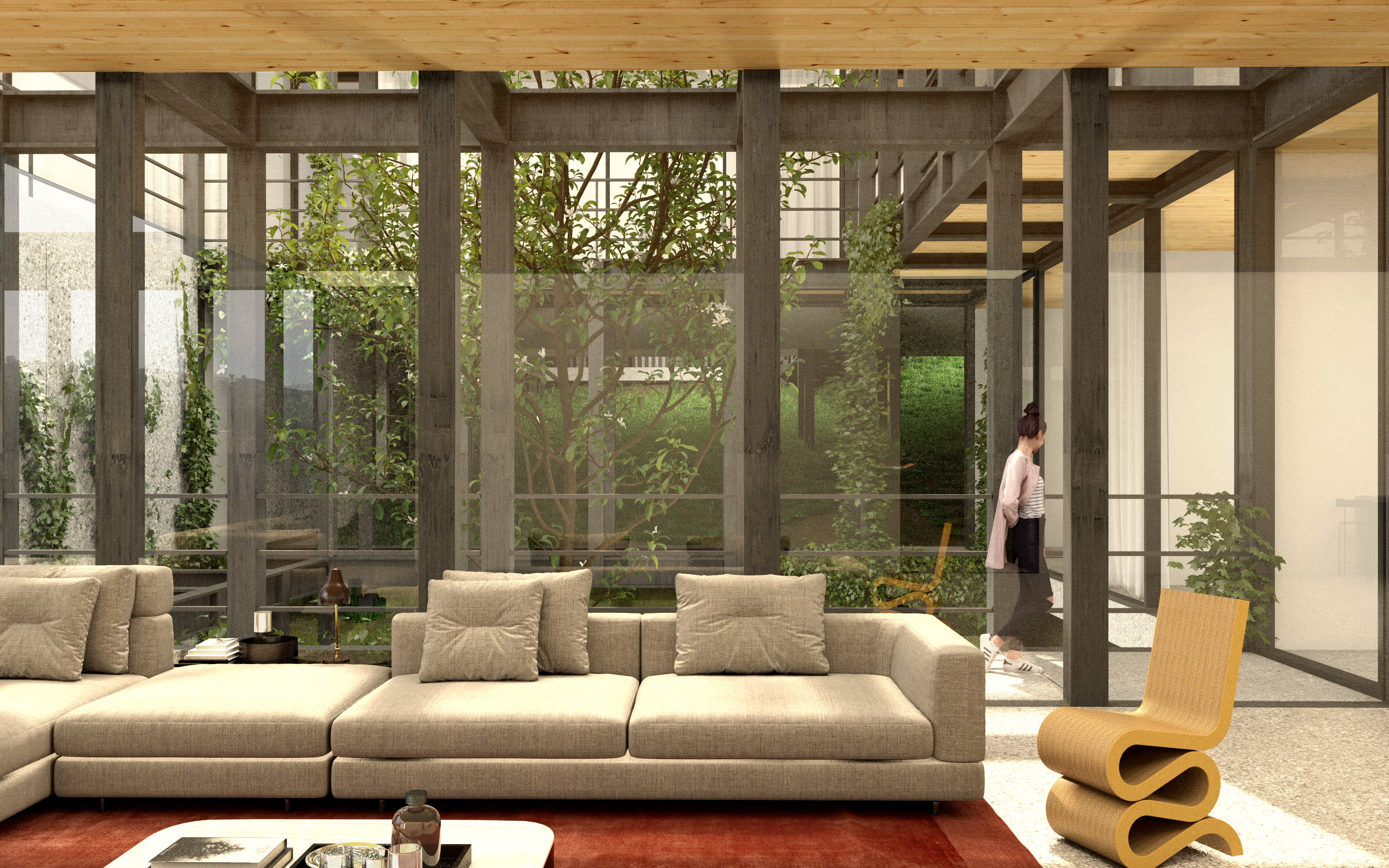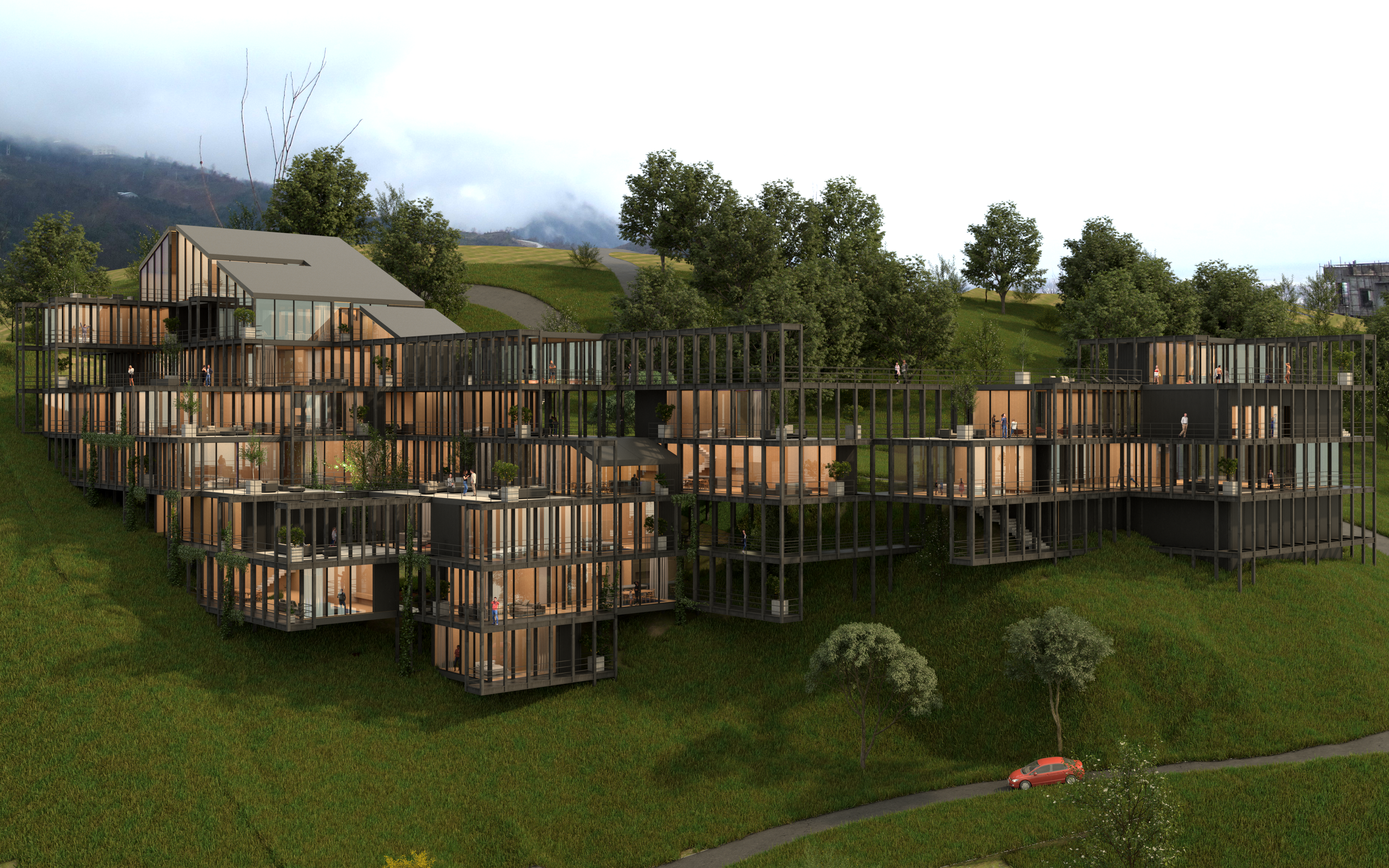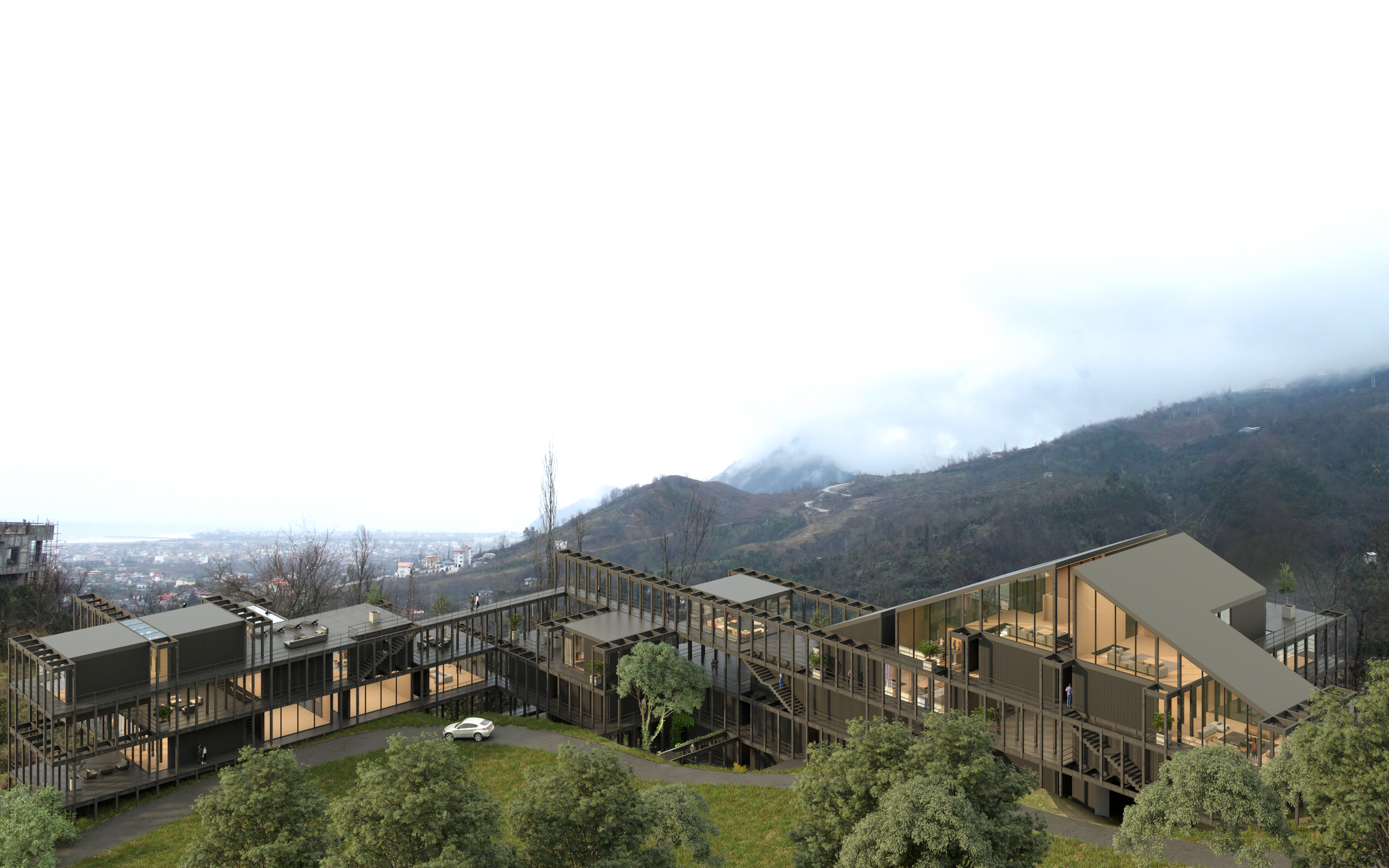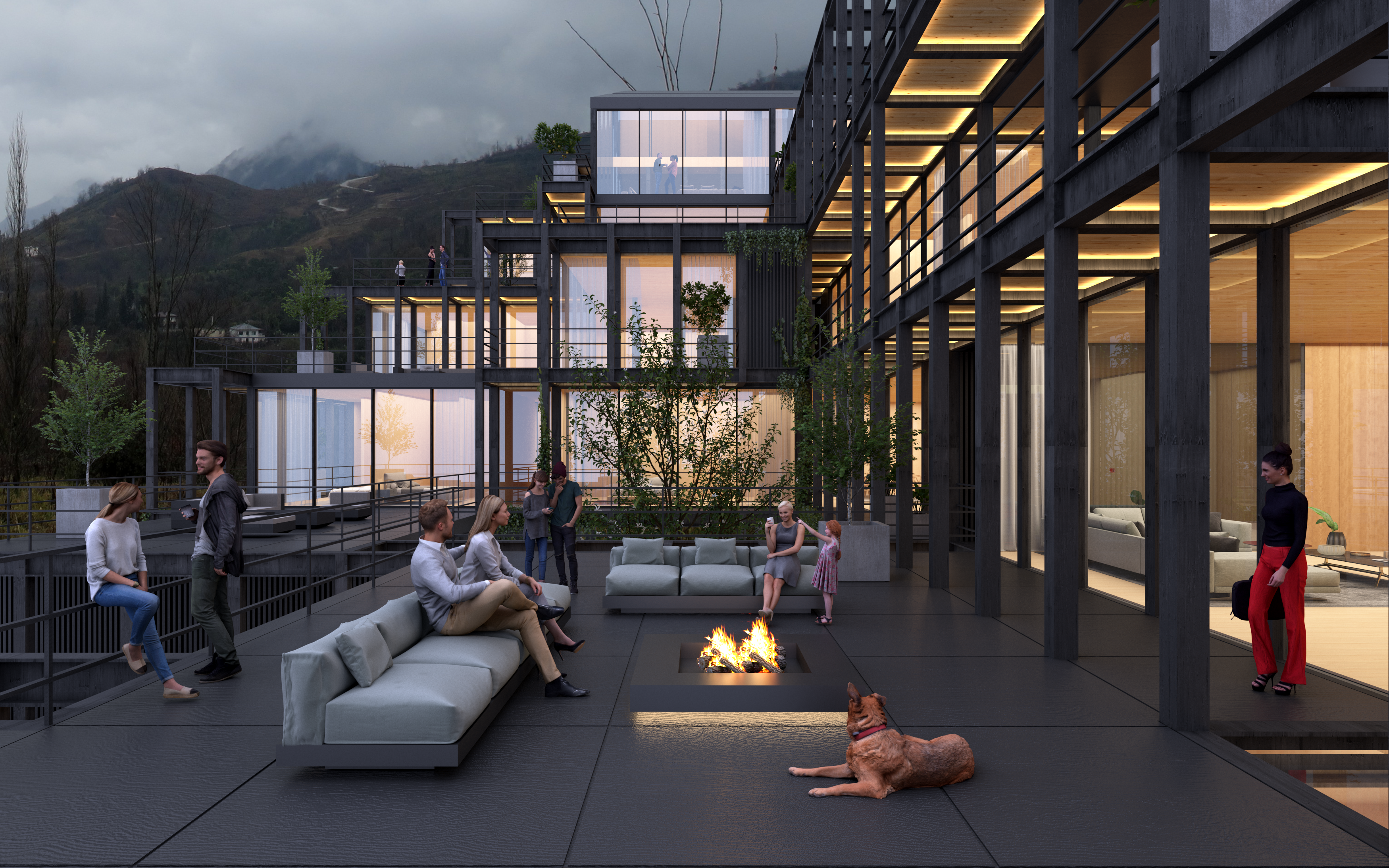
Dalaan Residential Complex
The Dalān Residential Complex is a 12-unit complex located in a forested area of Ramsar, Mazandaran Province in northern Iran, characterized by humid climate and situated on sloping terrain. The complex represents an exploration of the native architectural styles of northern Iran’s houses and their contemporary potential. This process involves transforming semi-open corridors, typically surrounding houses in northern Iran and considered as outdoor living spaces, into elements that allow for the development of a flexible and cohesive structure to meet today’s residential needs and accommodate various uses. These corridors, in addition to managing functional relationships within and outside the building, alone bear the structural load of the project and also adopt an approach to preserve the natural topography of the land. The repetition and rearrangement of these corridors create a variety of spatial configurations for residential units with different sizes and spatial qualities.
The architecture of traditional houses in northern Iran features unique characteristics designed according to local climate conditions and culture. These houses reduce humidity through architectural elements such as breezeways (talar) that create air currents. Activities typically centralized in the core of the house can also occur in corridors, which function like terraces, depending on the season, time of day, and user preference. In these houses, the core, with load-bearing walls, also structurally supports the building, with corridors circulating around the core. This project draws inspiration from this traditional layout, aligning itself with contemporary Iranian architecture by intelligently integrating the ancient architectural elements of Core and Corridor.
The project focuses on the relationship between open, semi-open (Corridor), and enclosed (Core) spaces. Wooden intersecting corridors prevent moisture penetration by facilitating air flow. This region of Iran has recently faced a natural resource crisis due to unchecked construction. Our approach integrates architecture with the topography, maintaining the natural landscape of northern Iran’s mountains while allowing for both close and distant views of this nature. As a result, the design strategically places cores based on the land’s capacity, minimizing alterations to the terrain's topology. The structural load is transferred from the core to the corridors, thus making construction economically feasible with closely spaced steel columns. This method preserves the natural site design and disperses density typical of high-rise projects, spreading it across a building structure that respects the land’s topography. In the design process, the corridors, derived from the foundation structure of traditional houses in northern Iran, are layered intersectional, and the building’s tectonics are shaped by the expansion of these corridors, thus providing a network of structures for the project. This structure not only accommodates the needs of our complex but also forms a flexible and expandable paradigm that, given its architectural capacity, could transform from a twelve-unit residential complex into a large house, a registry office, or even a nightclub.
- Location Ramsar, Mazandaran
- Client Mr. Rajabalibana ( Private Sector )
- Typology Hospitality
- Site Area 3,678 m²
- Total Floor Area 7,000 m²
- Status Idea
